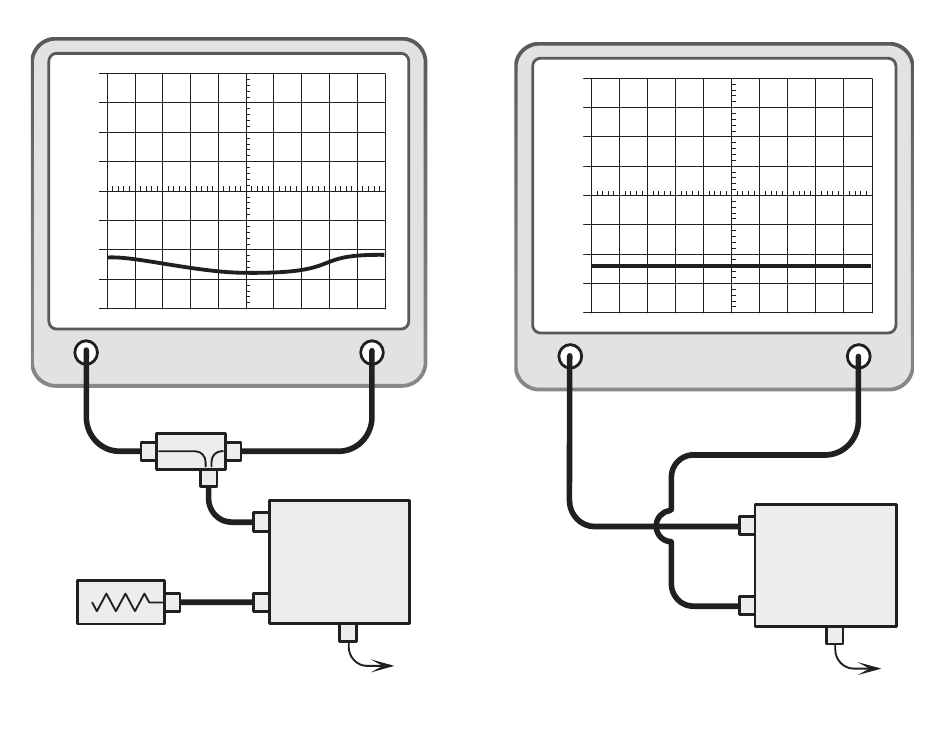User's Manual
Table Of Contents
- Installation and Operation Manual
- Table of Contents
- Introduction
- Installation
- Cautionary Notes
- Pre-RF Connection Tests
- OPERATION
- Signal flow
- System Components
- Field Adjustments
- Maintenance and Repair
- Recommended replacement parts
- Conversion Chart

TXRX Systems Inc. Manual 7-9408-1.2 07/25/05 Page 31
61-38-05 UserMan page 31 of 38
12) Due to interaction, tuning the output circuitry
affects the input tuning and vise-versa. Repeat
steps 8 through 11 until acceptable input and
output return loss occurs without further tun-
ing.
13) Connect the equipment as shown in
Figure 24
but connect the test leads together through a
female barrel connector and repeat the zero
reference procedure of step 2.
14) Using the figure 24 connection, verify that the
reverse isolation is at least -20 to -22 dB. This
value will occur normally as the result of proper
tuning.
The greater the reverse isolation the better as this
value must exceed the gain of the amplifier or oscil-
lation may occur. If after proper tuning this value
remains low, it may indicate a bad bypass capacitor
or defective RF transistor.
Output Level Control (OLC)
The OLC circuits are preset at the factory to limit
the RF power output of the signal booster branch to
the maximum two-carrier level as indicated on the
specification drawing.
DO NOT attempt to adjust
or change this setting.
This setting will be ade-
quate for protecting the final amplifier stage and
limiting intermodulation products.
OLC voltage data sheets are included with the
equipment shipment and list the actual OLC volt-
age values in relation to the degree of overload
detected for your unit. These sheets also record
the measured 1 dB compression point for the
branch and the calculated output intercept point
based on this compression point data.
CHECKING FOR OVERLOAD
Measurement of the DC voltage developed by the
OLC circuitry is a way to determine the degree of
input signal overload. In normal operation, up to 10
dB of overload on an intermittent basis is consid-
ered acceptable in most installations. Higher levels
GENERATE
OUTPUT
ANALYZER
INPUT
+40
+30
+20
+10
0
-10
-20
-30
-40
DC
AMPLIFIER
INPUT
OUTPUT
Figure 24
: Measuring reverse isolation.
GENERATE
OUTPUT
ANALYZER
INPUT
+40
+30
+20
+10
0
-10
-20
-30
-40
DC
50 OHM
LOAD
BRIDGE
AMPLIFIER
INPUT
OUTPUT
Figure 23
: Measuring output return loss.










